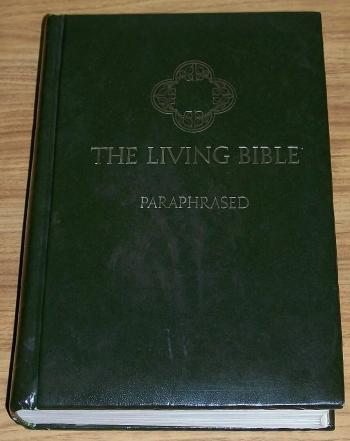1599 Geneva Bible (GNV)
The Geneva Bible: A Cornerstone of English Protestantism A Testament to Reform The 1599 Geneva Bible... Read More
The Living Bible (TLB) is a unique rendering of the Bible that has had a profound impact on how people engage with Scripture. Rather than a traditional translation, the TLB is a paraphrase, aiming to convey the meaning of the original text in contemporary language while maintaining its essence.
It's crucial to understand that the TLB is not a literal translation. Instead, it's a paraphrase, meaning it expresses the original text's meaning in different words. The goal is to make the Bible accessible and understandable to a wide audience, including those who may struggle with more formal translations.

Kenneth N. Taylor, a pastor and scholar, is the mastermind behind the TLB. His desire to make the Bible understandable to everyday people drove him to create this paraphrase. Taylor's deep understanding of Scripture and his ability to communicate complex ideas in simple language are evident throughout the TLB.
The TLB was incredibly popular upon its release and has continued to influence how people engage with Scripture. It opened up the Bible to a wider audience, including those who might have found traditional translations challenging. The TLB's emphasis on readability and relevance has had a lasting impact on subsequent Bible translations and paraphrases.
While the TLB's paraphrastic nature has been a subject of debate among some biblical scholars, its ability to connect with readers and inspire spiritual growth is undeniable. It has helped countless individuals develop a deeper relationship with God through His Word.
It's important to note that the TLB has been superseded by the New Living Translation (NLT). While the NLT shares some of the TLB's DNA, it is a more formal translation that aims for a balance between accuracy and readability. The NLT was developed with the help of a team of biblical scholars and incorporates the latest textual research.
The Living Bible remains a significant milestone in the history of Bible translation. Its emphasis on readability and relevance has made it a beloved resource for many. While the NLT has since surpassed its popularity, the TLB's legacy continues to influence how people engage with Scripture.